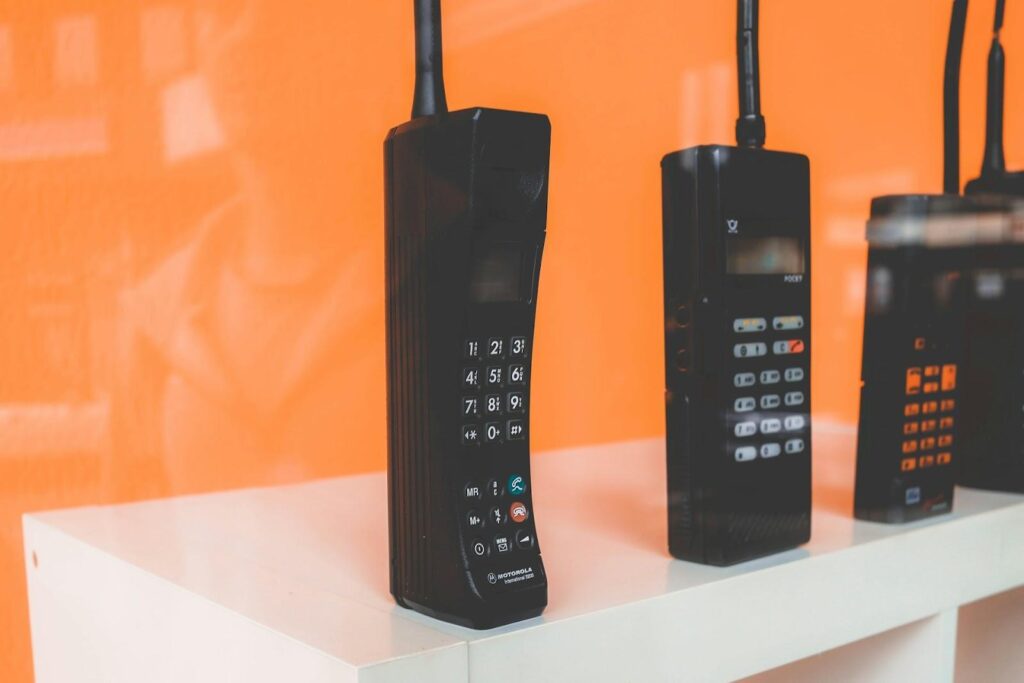The evolution of cell phones: From necessity to lifestyle

Photo by Daniel Romero on Unsplash
Opinions expressed by Digital Journal contributors are their own.
Imagine a world where your entire digital universe fits snugly in your pocket, a world where connectivity, entertainment, and innovation converge in the palm of your hand. This is not the stuff of science fiction but the reality of today’s society, thanks to the meteoric rise of cell phones.
From their humble beginnings as bulky bricks capable of mere voice transmission to the sleek, multifunctional smartphones of today, cell phones have undergone a transformation as dramatic as it is profound. They have evolved from luxury items to absolute necessities, and now, to integral components of our personal and professional lives.
The journey of cell phones is a fascinating tale of technological innovation, cultural shifts, and an ever-changing landscape of consumer needs and desires. It’s a story that mirrors our own evolution in how people communicate, interact, and live in the digital age.
As I dive into the history, the breakthroughs, and the future of cell phones, I invite you to explore how these devices have moved beyond their role as communication tools to become extensions of our lifestyles.
With an eye towards the flexibility and autonomy that today’s consumers crave, I’ll also shed light on the burgeoning market of cell phones for sale without plans, a testament to the desire for a mobile experience as unbounded as the devices themselves. Join me on this journey from necessity to lifestyle, and discover how the cell phone has become the ultimate symbol of our modern existence.
The birth of cell phones
The story of cell phones begins in the 1970s, with the development of the first portable handset by Martin Cooper and his team at Motorola. In 1973, they introduced the Motorola DynaTAC, a device that was more a symbol of technological potential than a practical tool for the masses.
It was bulky, with limited battery life, and offered just enough power for 30 minutes of talk time. Yet, it marked the dawn of mobile communication, setting the stage for what would become a revolution in connectivity.
The initial purpose of these mobile phones was straightforward – to provide a means of communication that could travel with its user, breaking free from the constraints of landlines. The target audience was primarily business professionals and emergency services, reflecting the device’s status as a luxury item and a tool for critical communication.
Over time, as the technology evolved and became more accessible, the potential for broader consumer adoption began to emerge, laying the groundwork for the mobile-centric world we inhabit today.
Technological advancements in cell phones
The evolution of cell phones from bulky, basic devices to today’s sleek, multifunctional smartphones is a testament to the rapid pace of technological innovation. Early cell phones were primarily designed for voice communication, with features and functionalities gradually expanding to include text messaging and basic data services.
However, the real transformation began with the advent of internet connectivity, turning these devices into portable gateways to the vast expanse of the digital world. This connectivity, coupled with significant breakthroughs in battery life, storage capacity, and camera technology, has fundamentally altered what people expect from our mobile devices.
Batteries now last days instead of hours, storage space can accommodate vast libraries of apps, photos, and videos, and camera technology rivals that of professional photography equipment. These advancements have not only enhanced the user experience but have also expanded the role of cell phones in our lives, from mere communication tools to indispensable hubs of personal and professional activity.
Cell phones: Becoming a cultural phenomenon
Cell phones have transcended their original purpose, morphing into cultural icons that shape how consumers interact, entertain ourselves, and view the world. The transformation of communication habits is most evident in the shift from voice calls to text messaging and instant messaging apps, creating a culture of constant connectivity.
Social media platforms, accessible from the palm of our hand, have further revolutionized our interactions, making it easier than ever to share moments, news, and thoughts in real-time. This digital revolution has also turned cell phones into primary sources of entertainment and media consumption, with access to YouTube, streaming services, mobile gaming, and online publications catering to a mobile audience.
The impact of cell phones on daily life is profound, as the distinction between personal and professional spheres becomes increasingly blurred. Remote work, mobile banking, and e-commerce are just a few examples of how cell phones have integrated into every aspect of our lives, underlining their status as indispensable tools in the modern world.
Cell phones for sale without plans: A market response to consumer needs
In response to a growing demand for flexibility and control over mobile communication, the market has seen a significant rise in the availability of unlocked cell phones and cell phones for sale without plans. This trend signifies a shift away from traditional, long-term contracts towards a model that offers consumers the freedom to choose their devices, service providers, and plans as their needs change.
Consumer Cellular has been at the forefront of this shift, offering a wide selection of cell phones without plans, thus providing enhanced user autonomy. This approach caters to a diverse customer base, from those seeking the latest smartphones without the burden of a contract to budget-conscious individuals looking for basic phones for essential communication.
The popularity of cell phones without plans underscores a broader cultural move towards personalization and flexibility, reflecting changing consumer preferences in an era where the ability to customize one’s mobile experience is highly valued. This trend highlights the evolving relationship between consumers and their mobile devices, emphasizing convenience, choice, and control.
The global impact of cell phones
Cell phones have become powerful tools for empowerment across the globe, particularly in developing countries where they facilitate access to information, services, and economic opportunities previously out of reach. In regions lacking traditional infrastructure, mobile phones offer a lifeline, enabling everything from digital banking to educational resources, thereby fostering economic development and social inclusion.
The widespread use of cell phones has spurred significant economic effects globally, catalyzing the growth of mobile markets, creating jobs, and stimulating innovation in mobile applications and services. However, the digital divide remains a pressing challenge, as disparities in access to mobile technology persist between urban and rural areas, and between developed and developing nations.
Bridging this divide presents both a challenge and an opportunity to leverage mobile technology for sustainable development, ensuring that the benefits of cell phone technology are accessible to all, thus furthering global connectivity and empowerment.
Future trends in cell phone technology and lifestyle integration
Looking to the future, cell phone technology is poised for further exciting advancements. Predictions for the next generation of cell phones include the integration of foldable screens, which promise to combine the compactness of smartphones with the larger displays of tablets for enhanced multimedia experiences.
Artificial Intelligence (AI) is expected to play a bigger role, offering more personalized and intuitive user interactions, from smarter virtual assistants to advanced photographic capabilities and health monitoring. The potential for technology to blend even more seamlessly with everyday life is evident in the rise of wearables and Internet of Things (IoT) devices, which connect everything from watches to home appliances, creating a more interconnected and automated environment.
These ongoing innovations in cell phone technology will likely redefine our relationship with these devices, moving towards a future where our cell phones become even more integral to our daily lives, acting as central hubs in a vast network of personal and professional activities. Reflecting on these trends, it’s clear that the evolution of cell phones will continue to shape not just how people communicate, but how they live, work, and interact with the world around us.
Embracing the mobile revolution: The journey ahead
As I’ve taken you on a journey from the birth of the bulky, basic cell phone to the sleek, multifunctional smartphones of today, it’s clear that these devices are more than mere tools for communication; they are extensions of our lifestyle, embodying the essence of modern connectivity and innovation.
From empowering individuals in developing countries to transforming global markets and even redefining our personal and professional lives, cell phones have truly become indispensable. As the future beckons, the potential for even more integrated, intelligent, and intuitive mobile experiences is boundless.
Embrace the evolution and ensure you’re part of this ongoing revolution. Consider exploring the latest in cell phone technology or perhaps, find the perfect device without a plan to suit your flexible lifestyle. The future is calling; it’s time to answer.
The evolution of cell phones: From necessity to lifestyle
#evolution #cell #phones #necessity #lifestyle





